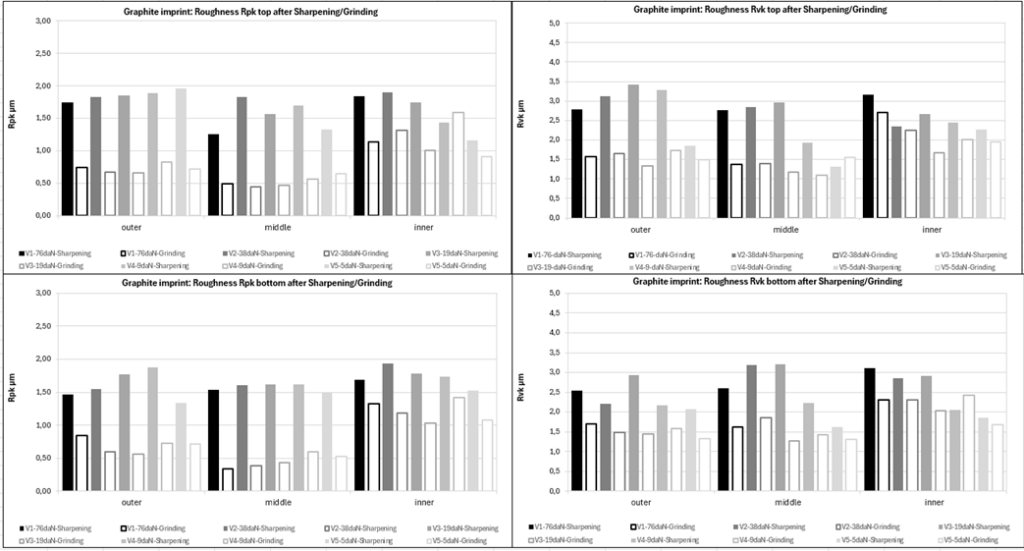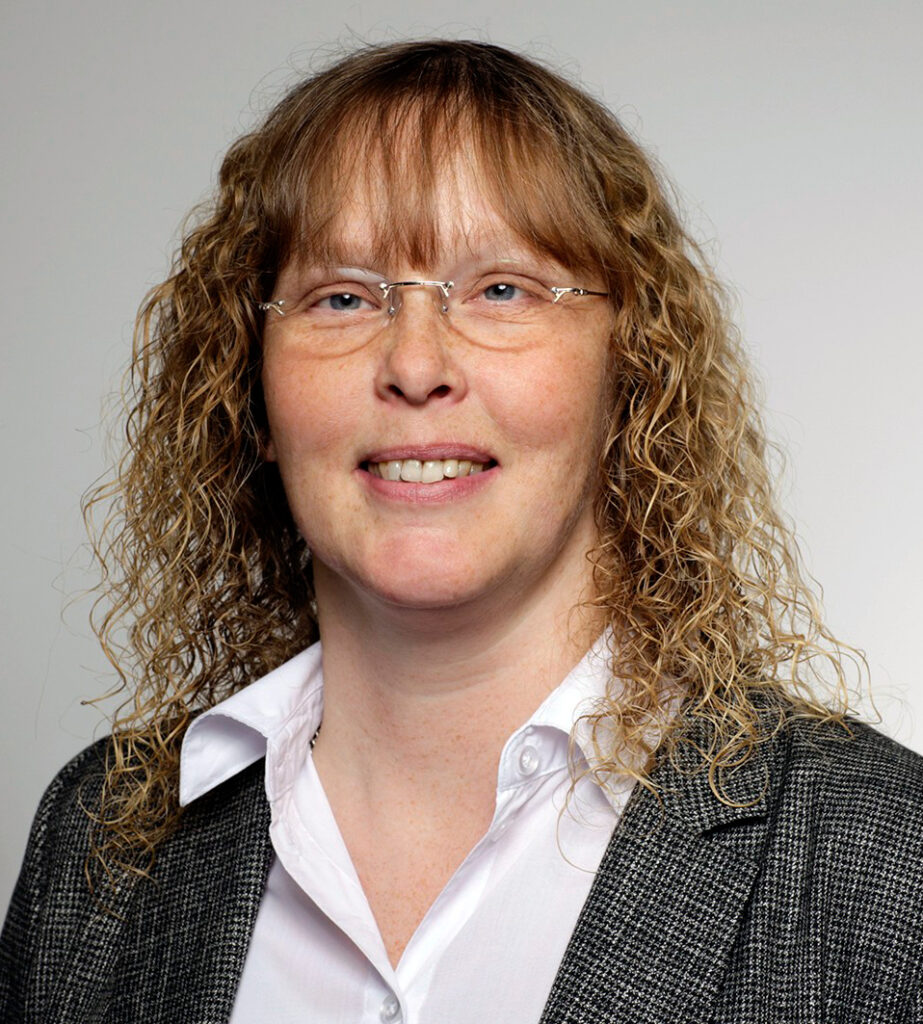Scientific research by Dr.-My. Marijke van der meer (KREBS & RIEDEL SCHLEIFSCHEBENFABRIK B) is a double disc crushed wheel and life life of the double disc crushed wheels by adjusting the pressure, speed, and grain size. Indicates that it can be expanded 。 As a result, the standard sharpening process is not very advantageous, and we support adjustments to specific requirements for tools. Technical consulting and optimization on customer sites can have a positive effect on the cost -effectiveness and efficiency of double disk grinding by planetary motor.


Conditions during sharpening and parameters:
The model AC500F, a model test machine of MµTech, was used. This is particularly suitable for KREBS & Riedel to reduce test costs low. In order to secure a reproducible sharpening condition, the wear of the sharpening ring is recorded, documented, and at least one repetition is executed. The coolant used is Emulsion Cintilo 81 E (5.4 %). Sharpering rings are immersed or wet, but no coolant is supplied during the sharpening process. After that, the grinding ring is cleaned.
In the standard sharpening procedure, one side is reduced to the concave surface, and once it is convex once to keep the wheel straight. Only the rotation direction of the inner pins changes changes. The rotation speed (RPM) per minute is as follows.top 30 / nbottom -36 / nmiddle -24 and convex surfaces: ntop 30 / nbottom -36 / nmiddle 24. The main load is 38 DAN, the time to cut around the rotation direction is 25 seconds, and the first 5 seconds are dedicated to wet in coolant. Wear from both shaking rings and lower grinding wheels is recorded. The latter is recorded after both sharpening and grinding.
Initially, check the crushed wheels using a closed layout 4D 76 X 18 V8318-40. This is sharp in 57c 220 I 5 V59 (Fig. 1). A component made from aluminum ceramic oxide (Fig. 2) is treated. Here, we measure nine components from Alotec92 to 20 x20mm², which have five carriers that have 5 carriers to 22.4 % of materials layouts. The main load speed is ntop 200; nbottom -200; nmiddle 20 RPM with crushing power on the main load of 30 dan. The removal speed is set to 100 µm/min, and is excluded for each execution of 200 µm. The crushing power increases automatically when the grinding ring is slowed down to maintain the removal speed. The run continues until it reaches the maximum power of 250 Dan to ensure the uniform slowing of the crushing surface.
In each trial, the process cycle time, power, actual removal rate, and the wear of the grinding ring are documented. In the case of aluminum oxide, the roughness is mainly caused by the coarse material structure and has nothing to do with the sharpness level. Therefore, here we omit the evaluation of the components. Even if you use a dull tool, Ra> 0.5 µm and 5 µm are achieved.
In order to capture the sharpness level in variations in various processes, a method using a graphite imprint has been introduced. The holding device for graphite pieces was created using 3D printing. These graphite pieces represent the generated envelope curve that polished wheel toopography as the roughness of the upper and lower disks.
result
The pressure changed when it started with the standard shaking process explained first. Higher pressure does not automatically mean a sharp disk based on roughness measurement. This is confirmed by removing the material of the graphite (Fig. 3).
The value in Fig. 4 was recorded during the roughness of the graphite. It is important to note that the graphite print corresponds to the negative impression of the terrain of the overlay grinding ring. This means that RVK represents the tip of the grain, and the RPK represents a valley of the topographic (pore/chip space). RPK and RVK indicate that they are more slow than inside. Therefore, the center of the cutting tool ring is the most flat. The upper surface remains slightly sharper than the bottom.
After being sharp, the surface is always roughly rougher than after crushing. RVK indicates that the difference between sharpening and grinding is smaller than RPK, which has less grain (RVK) than RPK (RPK).

Regarding the height of the total material removal, there is a minimum difference in the grind process following the pressure fluctuation during sharpening. However, there is a difference that can be observed more than three times as much as to tool wear (Fig. 5).

Usually, wear the amount of disks In MM³, it is compared to the total volume Vw The process efficiency is evaluated through the workpiece to mm³, which is called G value. High G value indicates the life of a long tool:
Here, more than a sharp ring needs to be explained as a “consumable item”, more disk wear is generated during the sharpening process. Therefore, the efficiency value E derived from comparing the total removal amount V will be introduced.w V for the total volume of diskwears Plus Supring Wear Vsr:
In addition to speed adjustment, pressure adjustment was also performed in addition to the speed and grain size, but if both pressure and speed are reduced, it will have a positive effect, but the yield effect of the particle size is significant. Only change occurs.
This adjustment directly affects the set of crushed wheels (assuming the thickness of the 6 mm coating) and the number of charging, which has a sharp ring over the entire disk life.

Lowering pressure in parallel with the speed improves efficiency in both sharpening and grinding processes. The survey has revealed that the pressure of more than three times the pressure increases.
The result shows that lowering the pressure with the speed improves process efficiency, and the change in the grain size had only a significant effect under a powerful deviation. These adjustments directly affect the life of the pulverized wheels, along with the number required for sharp rings.
In summary of the optimal efficiency summary in the fine grinding of the double disk, not only will it maintain the standard process, but also implement adjustments targeting process parameters such as pressure and speed to improve the overall process efficiency. While extending the life of the tool.
KREBS & Riedel specializes in treating vulnerable hard materials such as glass & sapphire caramics (sic & sin), Mixed Ceramics & Hard Metals.
KREBS & Riedel has developed a new detailed grain specification to grind a large surface area within the nanometer range featuring a high removal rate. The company offers a adjusted sharpening ring, along with global technical support aimed at optimizing the efficiency and life of customer tools.



